

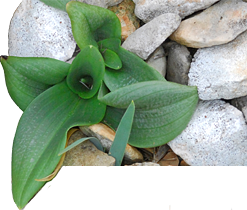
To the south of the Clape massif, the ponds of Gruissan and Campignol are home to populations of flamingos, ducks, egrets or herons that can be observed quite easily.

Situation map
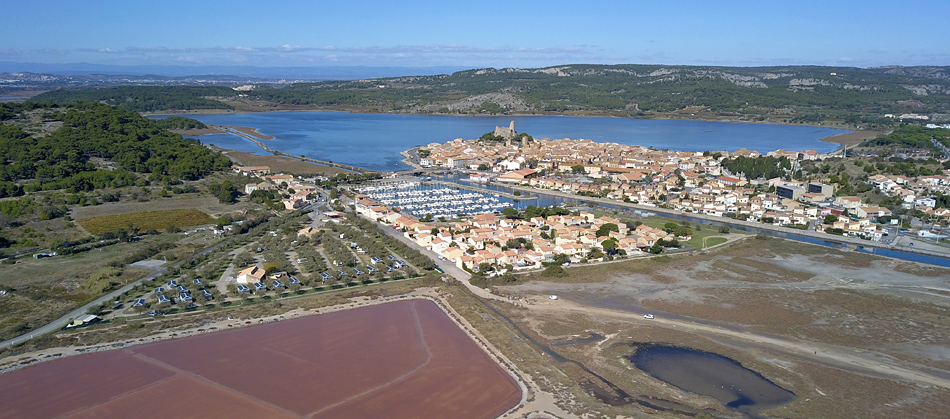
The village of Gruissan and its pond. In the background, the La Clape massif
The video below shows an overview of the Gruissan salt flats
Link to the video in higher definition (HD 720p)
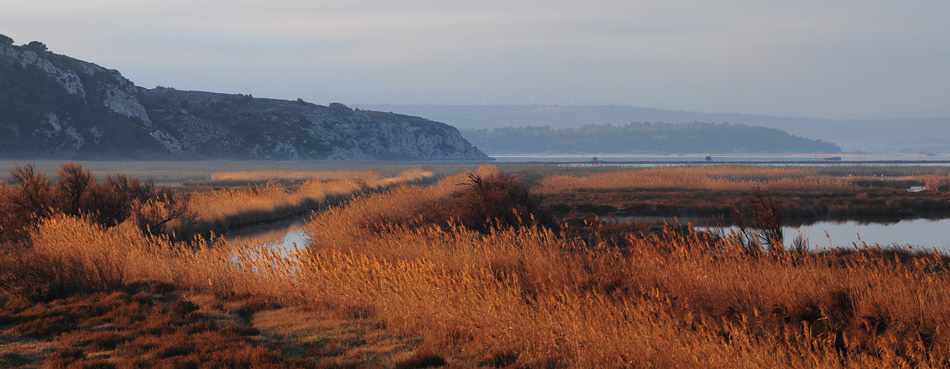
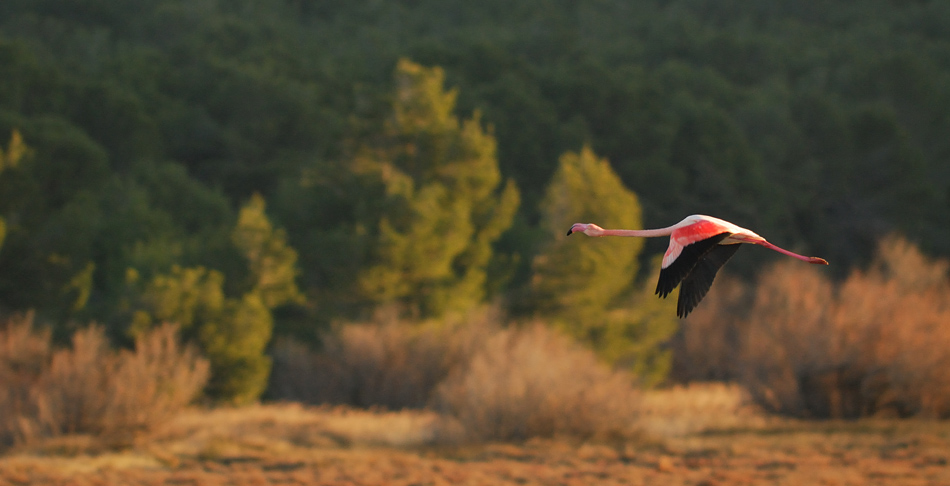
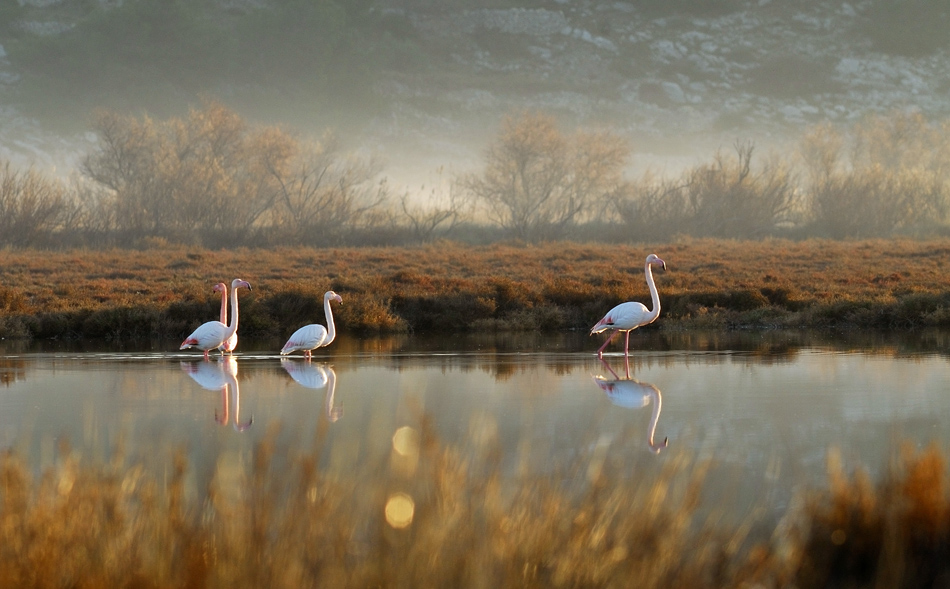
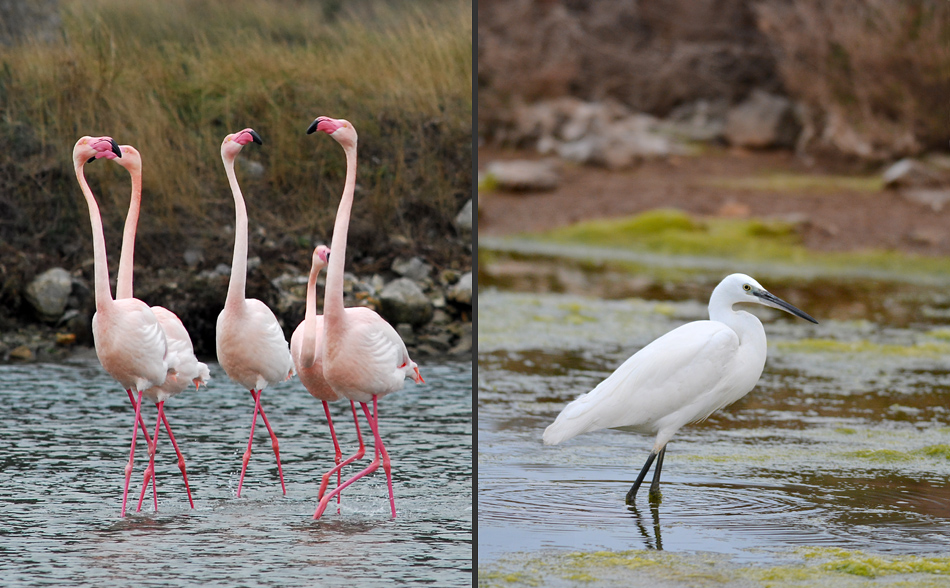
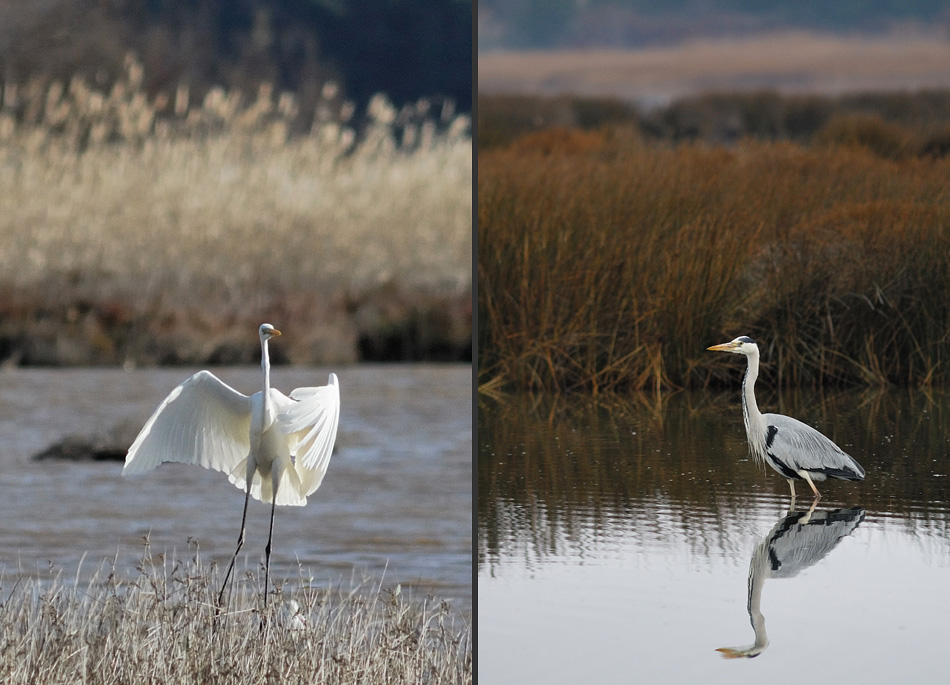
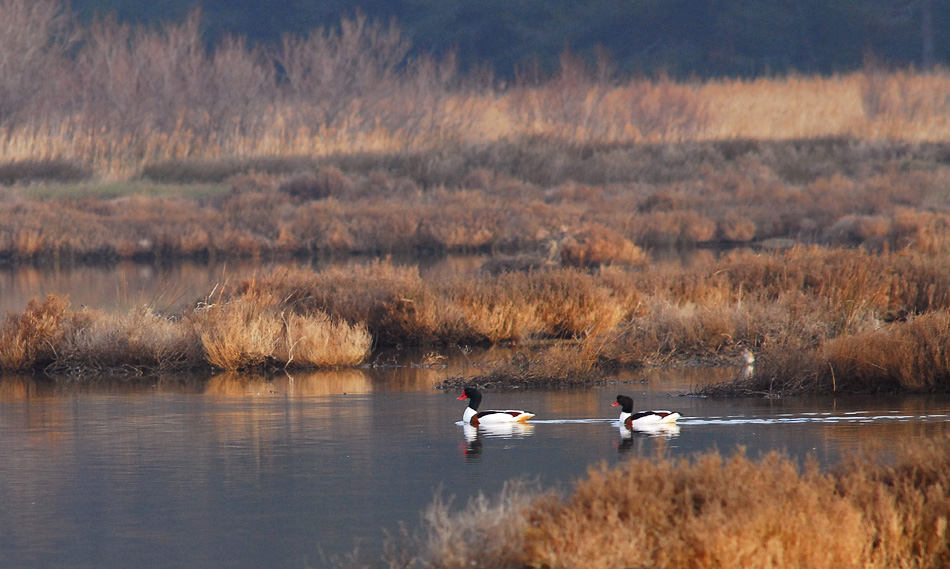
Flamingos, Little Egret, Great Egret, Gray Heron and Belon Shelduck
Further east, on the edge of the Grazel pond, many barlia are visible from February. Some specimens display amazing colors.
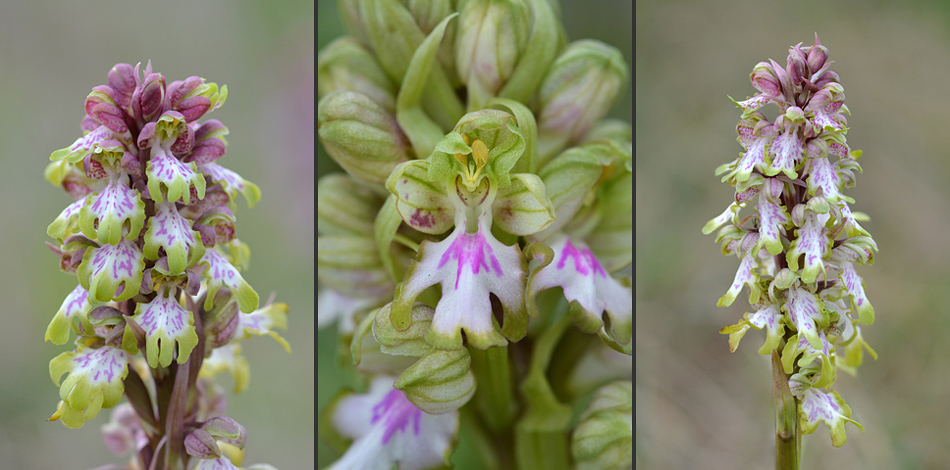
Himantoglossum robertianum - forms with atypical colors
The beach of the chalets is a beautiful stretch of fine sand which is occasionally flooded by seas. The wooden chalets on stilts originally built on the beach itself are a particularity of Gruissan.
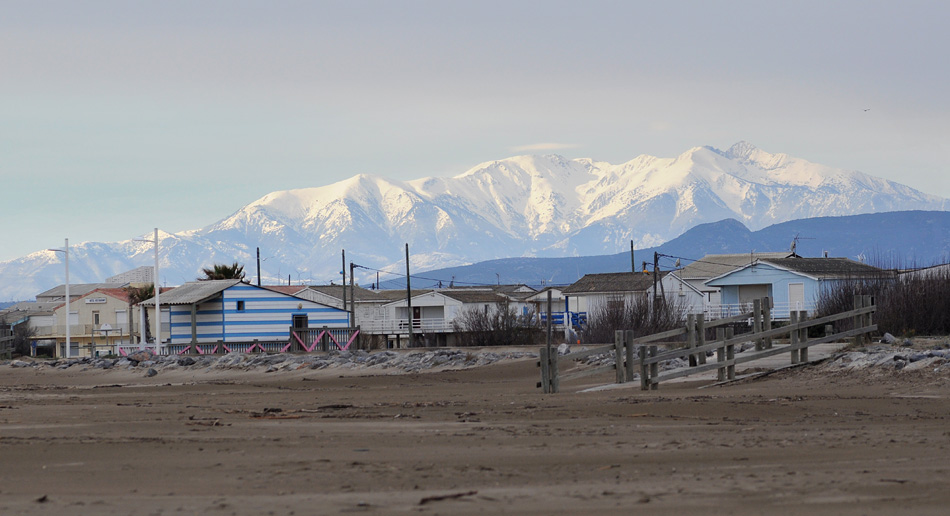
Chalets beach with the Canigou massif in the background
To the south is the island of Saint Martin. This strip of land, which has retained its wild character, offers views over the Ayrolle pond and the Gruissan salt flats. Between the limestone hills where scrubland and pine forests predominate, there are a few wine estates producing fine and high quality wines. The ancient site of Saint-Martin-le-Bas, which extends over at least 3 ha, leans against the southern slope of the island, about 300 m from the current shore of the Ayrolle pond. The excavations carried out since 2011 have brought to light the remains of an establishment which was closely linked to the port complex of Narbonne, whose considerable economic importance is known throughout Antiquity.
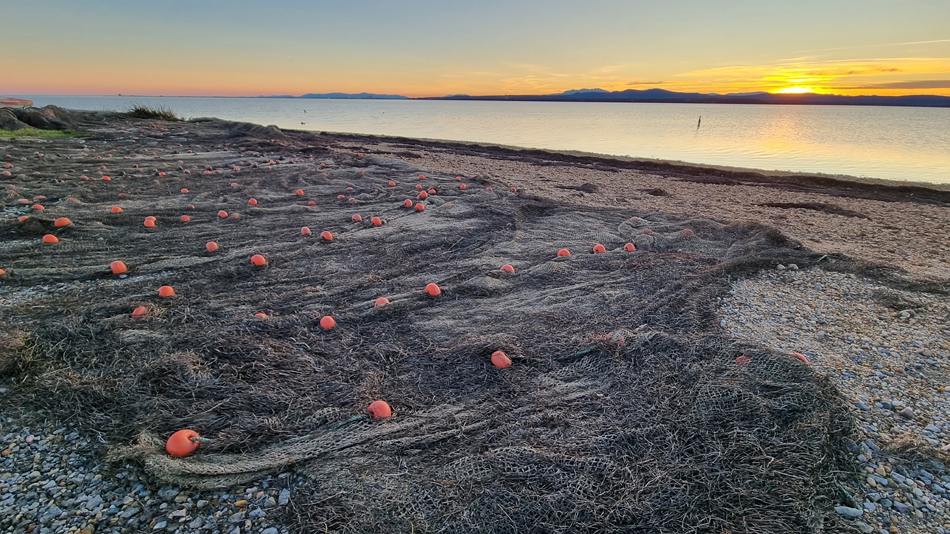
Saint Martin Island
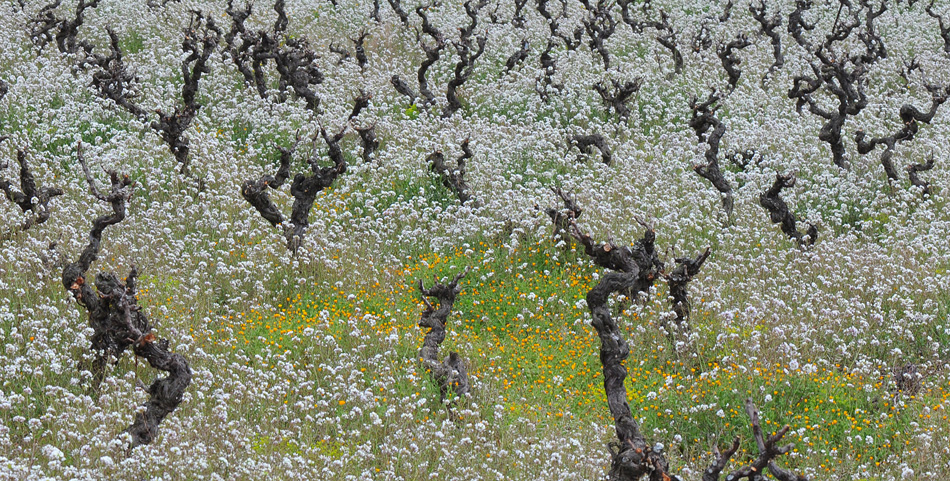
The vines in early March.
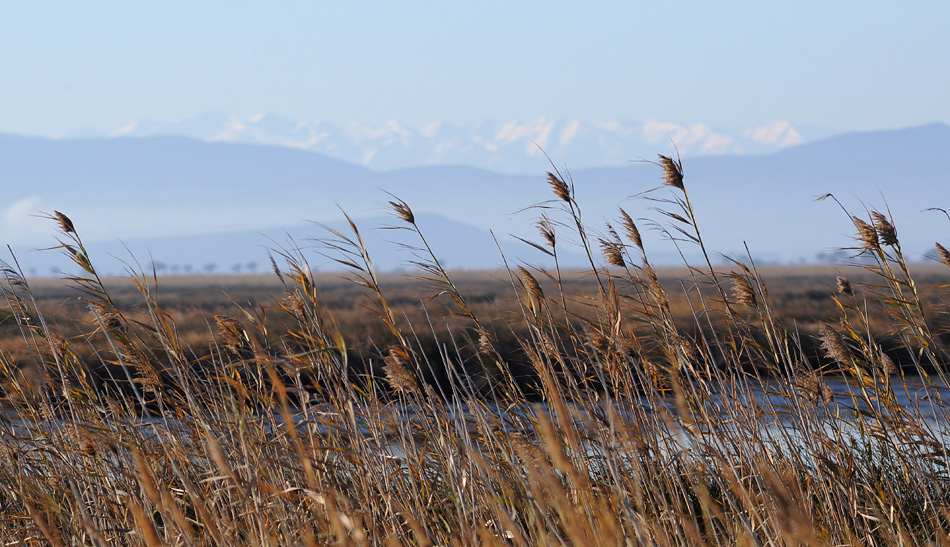
The pound of Campignol with the Pyrenees in the background
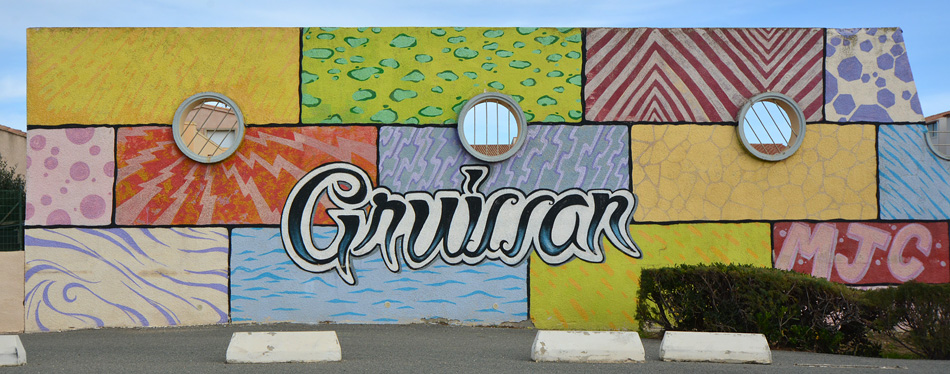
![]()
![]() Gruissan city website: https://gruissan-mediterranee.com/
Gruissan city website: https://gruissan-mediterranee.com/

![]()
![]() Le massif de la Clape, un site classé. G. Collin et J-P. Bonincontro. PNR de la Narbonaise en méditerranée. Les carnets du Parc n°19 (2017), ISBN: 978-2-919202-25-6
Le massif de la Clape, un site classé. G. Collin et J-P. Bonincontro. PNR de la Narbonaise en méditerranée. Les carnets du Parc n°19 (2017), ISBN: 978-2-919202-25-6
![]()
![]() A la découverte des Orchidées en Languedoc et Pays Catalan. R. Buscail, F. Dabonneville, J.M Lewin et M. Nicole. Biotope Editions (2019), ISBN: 978-2-36662-222-5
A la découverte des Orchidées en Languedoc et Pays Catalan. R. Buscail, F. Dabonneville, J.M Lewin et M. Nicole. Biotope Editions (2019), ISBN: 978-2-36662-222-5
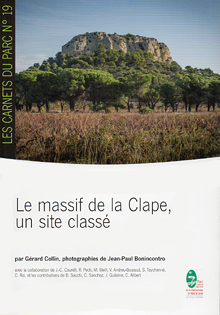 |
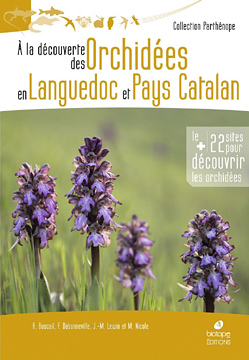 |
Previous page![]() Back to Regions summary
Back to Regions summary